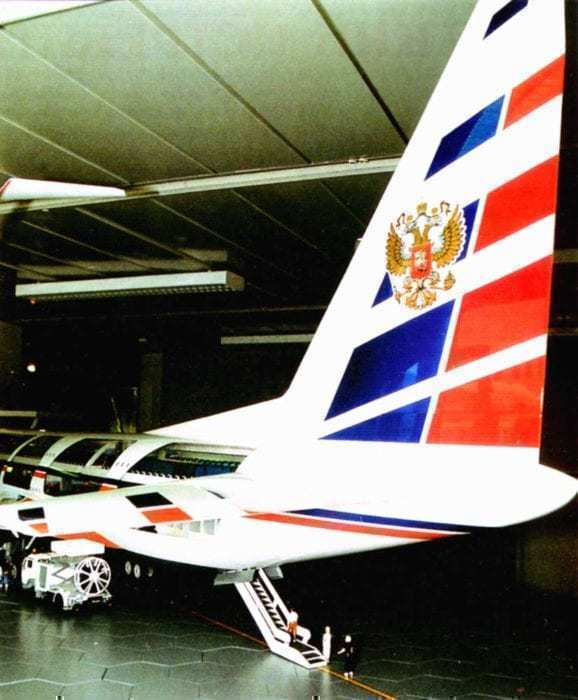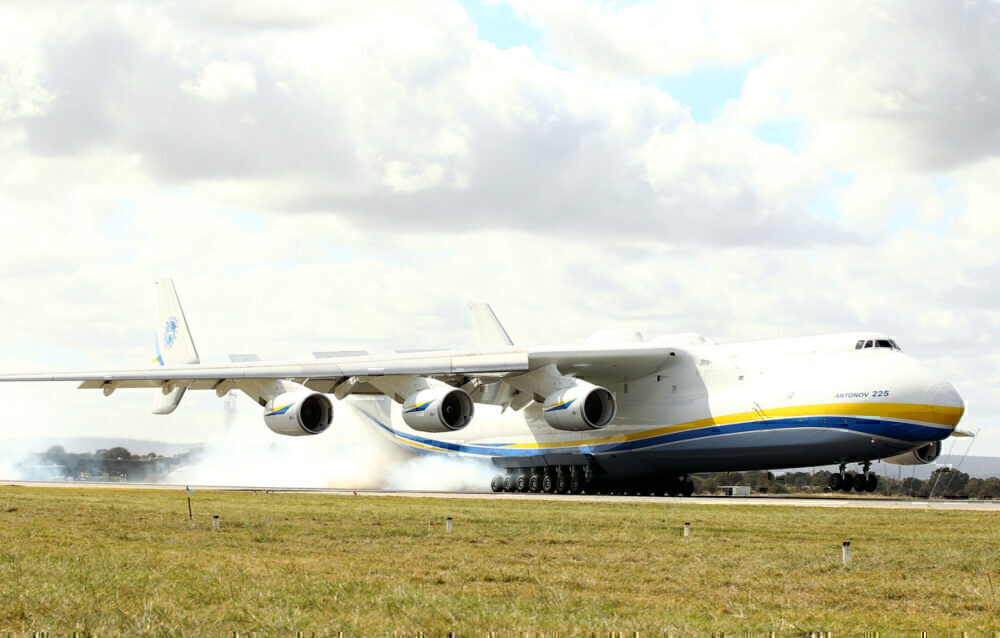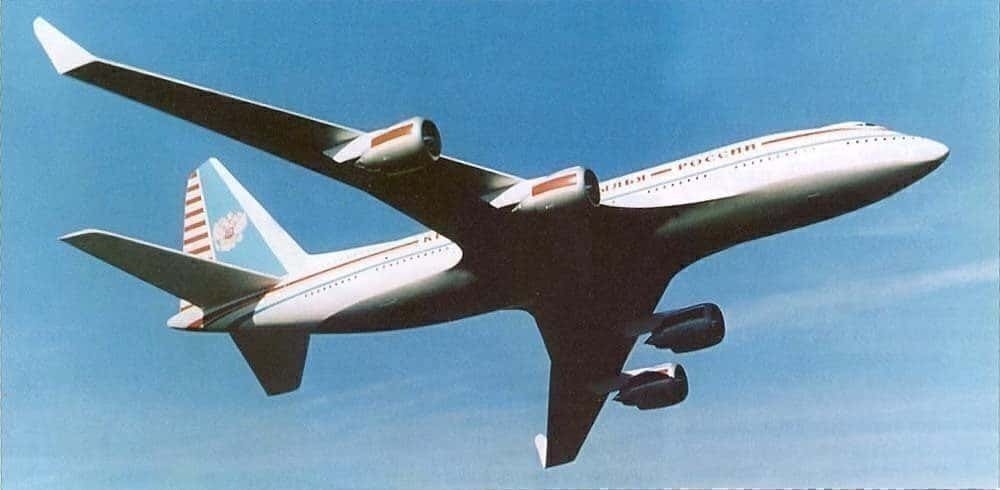Airbus designed its A380 ‘superjumbo’ aircraft based on the belief that the future of air travel was hub-to-hub. The company saw the plane of the future as being large-capacity, with enough room for hundreds of passengers. Boeing, on the other hand, believed in direct routes between destinations, a model known as point-to-point. Therefore the American manufacturer focused on smaller, more fuel-efficient aircraft, such as its 787 ‘Dreamliner.’
These models turned out to be radically different in terms of their success. Airbus was the loser in this battle, with production of the A380 officially being canceled in February 2019. However, there was, albeit briefly, a third competitor involved. Sukhoi’s proposed KR-860 was the gigantic Russian answer to the A380, and the equivalent of doubling down on red. This aircraft took the hub-to-hub model to the extreme.

Big plans
Revealed at the 2001 Paris Airshow, the Sukhoi KR-860 was a four-engine double-decker widebody aircraft. This design is, of course, similar to the Airbus A380, although its planned capacity was significantly higher. The 860 in its name refers to how many passengers the colossal aircraft was planned to carry. In contrast, British Airways’ four-class configuration on the A380, according to SeatGuru, has a capacity of 469 passengers.
The KR in the aircraft name stands for “Kryl’ya Rossii.” In English, this translates to ‘Wings of Russia.’ It was developed by Sukhoi, a Russian aerospace firm that also builds a multitude of fighter jets for the military. Design work began in 1997. The aircraft was never actually built, but a 1/24 scale model was created to showcase the future concept.

Three variants were initially proposed.
- A passenger variant, as seen in the image below.
- A cargo variant that could hold railcars/cargo containers. This would mean that modular shipping containers would not have to be de-loaded for transport.
- A liquid-gas variant used to transport products from oil fields. The liquid-gas could have been used to power the plane instead of jet fuel, meaning the flight would have been free for the airline.

Planned specifications
- Capacity: 860-1000 passengers
- Length: 80 m (262 ft 6 in)
- Wingspan: 88 m (288 ft 9 in) with the wings unfolded, or 64 m (210 ft) span with wings folded
- Wing area: 700 m2 (7,500 sq ft)
- Max takeoff weight: 650,000 kg (1,433,005 lb)
- Powerplant: 4 × General Electric CF6-80E1A4B turbofan, 320 kN (72,000 lbf) thrust each, or 4 × Pratt & Whitney PW4168A turbofan, 305 kN (69,000 lbf) thrust each
- Cruising speed: 1,000 km/h (621 mph; 540 kn)
- Range: 15,000 km (9,321 mi; 8,099 nmi)
In addition to the suggested GE or Pratt & Whitney engines, both of which were used on the Airbus A330, there was also the possibility of using Kuznetsov NK-93 engines. This would have been the cheapest possible option, comprising eight engines in four pairs.
How many passengers could it carry?
The typical A380 can carry around 550 passengers, with an all-economy variant holding 800. The KR-860, however, far outstrips this. The aircraft had a planned capacity of 860 passengers, or as many as 1,000 in an all-economy configuration. To put this in perspective, the designers intended for the lower deck to consist of 12-abreast seating with three aisles. This would have been a first for commercial air travel. The upper deck was planned to have a more conventional configuration of 9-abreast seating with two aisles.

The KR-860’s seating configuration was not its only groundbreaking design aspect. In order to help its masses of passengers board and disembark punctually, the aircraft came with three escalators built into the hull. Under the plane were escalators to ferry passengers from the ground quickly up to their respective deck.
Boeing copied the wings
The design had such a large wingspan that the wings themselves had to fold up in order to safely park at airport gates designed for Boeing 747 aircraft. Such technology may seem a familiar concept, and indeed the new Boeing 777X uses the same system. The degree of folding on this type is, however, not as extreme as on the KR-860.

A country known for large aircraft
As far as large Russian aircraft are concerned, the Sukhoi KR-860 is far from an anomaly. The world’s largest country is, for example, famous for being home to the world’s largest turboprop aircraft, the Antonov An-22. This type debuted at the Paris Airshow in 1965, and three of the 69 built remain active today.
Russia has also produced the world’s largest aircraft outright. Boasting six engines and 32 wheels, the enormous Antonov An-225 first flew in 1988. Only one aircraft of this type was produced. Although it sat in storage between 1994 and 2001, it has since returned to active service, attracting colossal interest among ‘avgeeks’ wherever it goes.

Why did it never fly?
The program originally predicted there would be a market for 300 aircraft. As we now know, Airbus only sold 290 A380s over the course of its entire program, so a Russian made super A380 claiming to sell more is highly unrealistic. Possible markets would have been Russia, China, India, Vietnam, and Africa. Following the diplomatic fallout of the Cold War, Western countries were still wary of Russian made aircraft at the time. As such, they would likely have favored Airbus or Boeing aircraft instead.

The program itself was estimated to cost around $10 billion in 2000. To help with this cost, Sukhoi turned to China and India to create a joint venture. This made the Russian government uneasy about funding an aircraft that ultimately would see little use in Russia. As a result, they diverted funds to other projects in 2001.
While we can agree that Russia (and the world) would never have seen a use for this aircraft, it would undoubtedly have been quite a sight to see.
[ad_2]
Source link


